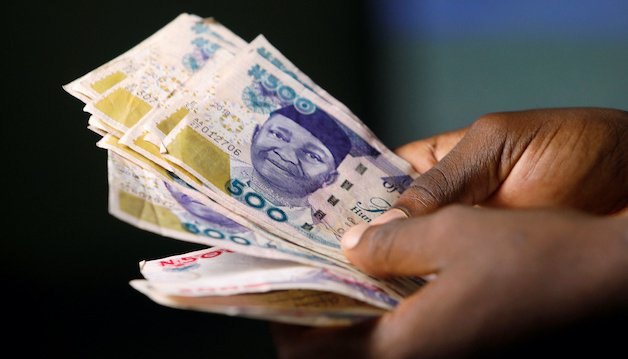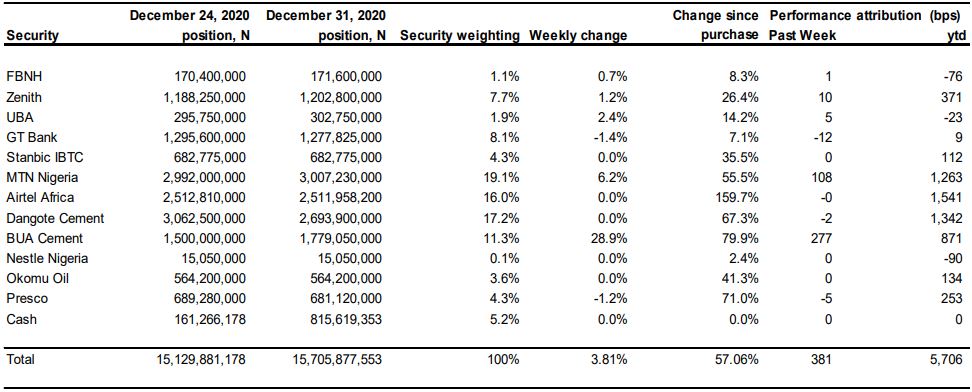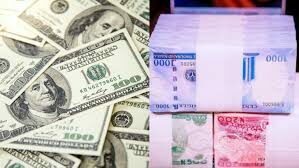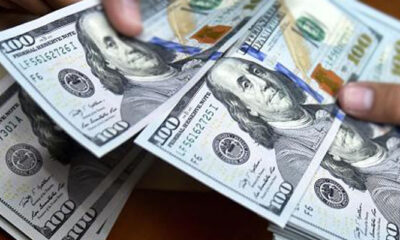Business & Economy
Is Naira Now A Crawling Peg?

Coronation Research – Currency traders who were hoping for a quiet end to 2020 did not get their Christmas wish. During 30 and 31 December the Naira/US dollar rate moved by 4.26%, to close at N410.25/US$1 in the Importers and Exporters Window (I&E Window).
At the same time, the Naira weakened by 2.02% to close at N400.33/US$1 in the NAFEX market. Bloomberg reported that the Central Bank of Nigeria (CBN) was allowing the markets to do this.
Should we be surprised, or are these moves part of a deliberate strategy? We have argued for a long time that, over multiyear periods, the Naira/US dollar rate reflects differences between their inflation rates. This logic can also be applied to a single year.
So, for example, given that Nigerian inflation is at 14.9% y/y (November 2020) and US inflation is 1.2% y/y (November 2020) then the Naira might reasonably depreciate by 13.5% over the same period. In fact, the Naira has devalued by roughly this much over the past year, depending on which rate you use. Taking the FMDQ OTC NAFEX rate, the Naira moved by 9.92% to N400.33/US$1 over the past year. Taking the FMDQ OTC I&E Window rate it moved by 12.53% to N410.25/US$1.
I&E Window, NAFEX rate & CBN Official rate
This calls to mind what CBN Governor Godwin Emefiele stated in a televised address after the Monetary Policy Council (MPC) meeting last November when he expressed frustration with people quoting parallel market rates. He said: “But we are saying that, even if the currency is overvalued, shouldn’t you go through a step-wise process where the shock can be less-felt, rather than those (who are supposed to know how this works) beginning to cause panic by saying that the exchange rate of Nigeria is 480?”
Naira/US dollar rate
Here the Governor hints at a crawling peg to make step changes in the exchange rate. A crawling peg can be based on inflation differentials, or on other exchange rate targets. The CBN itself made significant changes in its official rate last year, with steps that moved the exchange rate by 24.0% (see chart).
We do not expect to see a crawling peg regime announced, but we do expect the CBN to continue with such step-changes in Naira/US$ exchange rates during 2021. This way the CBN would be able to gradually narrow the gap between, say, the FMDQ OTC I&E Window at N410.25/US$1 and the cash parallel exchange rate, reported at N470.00/US$). Doing this might go some way to addressing the World Bank’s stance that Nigeria needs to merge its currency rates. And it might improve liquidity in the NAFEX and I&E Windows, with time.
Last week the Model Equity Portfolio rose by 3.81% compared with a rise in the Nigerian Stock Exchange All-Share Index (NSE-ASI) of 3.79%, therefore outperforming it by 2 basis points. Over the year 2020, it gained 57.06% against a gain of 50.03% in the NSE-ASI, outperforming it by 703bps.
Our current concern is that that market is getting carried away. The four largest index weights are up substantially over the past two months: MTN Nigeria by 17.99%; Airtel Africa by 107.65%; Dangote Cement by 53.06% (this was the subject of a buy-back); BUA Cement by 70.00%. We doubt this rate of increase can be sustained at the same time as market interest rates are rising.
Model Equity Portfolio for the week ending 31 December 2020
So, and as mentioned last week, we are beginning to trim our notional positions in these stocks. This simply means, for the time being, raising the level of notional cash, which has risen from 1.1% to 5.2% over the past week. But it also means that we are putting relatively more emphasis on our notional positions in bank stocks, which have risen by far less over the past two months.
In practical terms, we have not got much of our trimming done. There were only three trading sessions last week and turnover in some stocks, notably Airtel Africa, was thin. We will continue this week.
At the same time, we remind ourselves of our maxim that we do not attempt to guess the direction of the market.
We set out to take notional positions in the stocks that we like when their valuations are low relative to their own valuation history; when the return on equity (RoE) looks reasonable (20.5% or more in Naira); when there are growth prospects. We will look to these metrics as we re-shape the model portfolio.















